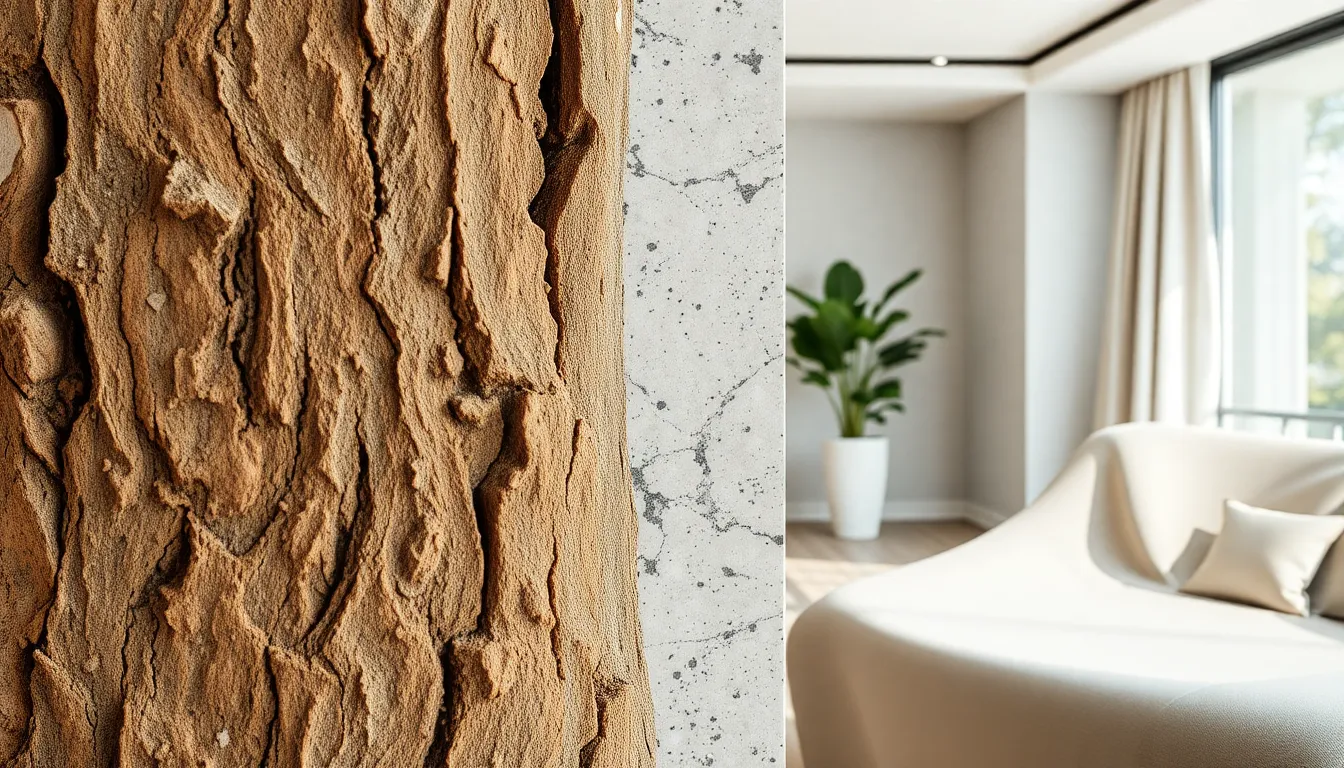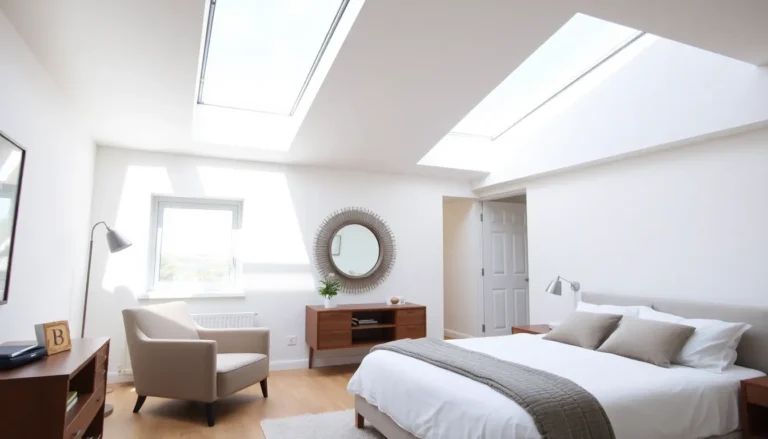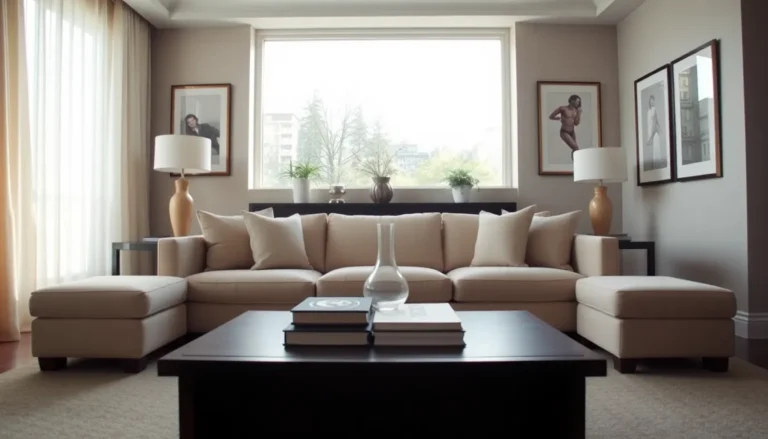When it comes to design, texture and patterns are the secret ingredients that can elevate any project from bland to grand. Imagine walking into a room where the walls whisper stories through their intricate designs or a fabric that feels like a warm hug. These elements don’t just add visual interest; they create an experience that pulls you in and keeps you engaged.
Textures can tickle the senses while patterns dance across surfaces, sparking joy and curiosity. Whether it’s the cozy feel of a knitted blanket or the bold stripes of a modern rug, these details have the power to transform spaces and moods. So, let’s dive into the wonderful world of texture and patterns, where creativity knows no bounds, and every surface has a story to tell.
Table of Contents
ToggleUnderstanding Texture And Patterns
Texture and patterns play a crucial role in design, affecting visual and tactile experiences. Understanding these concepts enhances creativity and informs design choices.
Definition Of Texture
Texture refers to the surface quality of an object, describing how it feels or appears. It impacts the sensory perception of a space, influencing comfort and atmosphere. Designers utilize various textures, such as smooth marble, rough brick, or soft fabrics, to create depth and interest. Texture can evoke emotions and establish connections within a space. For instance, a plush sofa invites relaxation, while metallic accents add sophistication. Varied textures layered together enrich the overall design and foster a more engaging environment.
Definition Of Patterns
Patterns consist of repeated decorative designs or motifs found in textiles, wallpapers, and other materials. They enhance visual continuity and can dictate the overall theme of a design project. Common patterns include geometric shapes, floral designs, and abstract forms. Designers use patterns to create rhythm and guide the viewer’s eye throughout a space. A bold geometric print can energize an area, while subtle stripes may instill calmness. Integrating diverse patterns with attention to scale and contrast can result in vibrant and cohesive designs.
Types Of Textures

Textures play a vital role in creating depth and enhancing the sensory appeal of spaces. They can be broadly categorized into two types: natural textures and artificial textures.
Natural Textures
Natural textures exist in elements found in nature. Wood, stone, and textiles made from plants or animals represent common examples. Natural textures often evoke a sense of warmth and authenticity. The roughness of tree bark or the smoothness of polished stone creates tactile experiences that connect individuals with the environment. Designers frequently incorporate these textures to foster a sense of tranquility or ruggedness. Natural elements can also introduce organic patterns, enhancing the visual dynamics of a space.
Artificial Textures
Artificial textures are man-made materials and surfaces, designed to mimic or enhance natural qualities. Examples include synthetic fabrics, tiles, and wallpaper featuring intricate patterns. These textures can deliver versatility in design, offering innovative options for various aesthetics. The sleekness of acrylic or the intricate finish of embossed metal can provide striking contrasts. Artificial textures often play a significant role in modern design, allowing for unique combinations that cater to specific themes or styles. By merging artificial textures with natural elements, designers achieve balanced and engaging environments.
Exploring Patterns
Patterns play a crucial role in design, influencing both aesthetics and mood. They can create visual interest and establish a theme within a space.
Geometric Patterns
Geometric patterns consist of precise shapes like squares, triangles, and circles. Designers utilize these patterns to establish order and symmetry in a project. The structured nature of geometric patterns often conveys modernity and minimalism. For instance, a tile with a chevron design can enhance a contemporary kitchen, highlighting clean lines and simplicity. These patterns work well in both small-scale applications, like wallpaper, and large-scale installations, such as flooring, ensuring versatility in design choices.
Organic Patterns
Organic patterns arise from natural forms found in nature, such as leaves, clouds, or waves. These patterns exhibit fluidity and movement, creating a sense of harmony and relaxation. Designers often integrate organic patterns to add warmth and invite a natural feel. For example, a fabric featuring floral motifs can soften the atmosphere of a living room, making it feel inviting. Utilizing organic patterns in spaces like bedrooms promotes tranquility and comfort, enhancing the overall experience.
The Role Of Texture And Patterns In Design
Texture and patterns significantly enhance design by creating visual interest and emotional connections. They contribute to the overall sensory experience, inviting engagement and interaction.
In Visual Arts
Artists often utilize texture to convey depth and evoke emotions. For instance, layered paint can create a tactile quality, drawing viewers closer to the artwork. Patterns in visual arts, such as repetitive motifs, establish rhythm and cohesion. Techniques like pointillism showcase how tiny dots form larger images, captivating the audience. Bold patterns in contemporary art challenge traditional aesthetics, sparking conversations about style and interpretation. Different textures and patterns stimulate the viewer’s curiosity, enriching their appreciation of the piece.
In Interior Design
Interior designers leverage texture to define spaces and enhance comfort. Soft textiles, like cushions and rugs, promote coziness, making environments inviting. Conversely, sleek surfaces like glass or metal provide a modern, polished look. Patterns play a crucial role in decorating, guiding the eye and establishing themes. Geometric wallpaper can create a dynamic focal point, while floral fabrics add warmth and vibrancy. The strategic combination of various textures and patterns fosters an engaging and harmonious atmosphere, catering to diverse tastes while ensuring functional design.
Texture and patterns are pivotal in the world of design. They not only elevate aesthetics but also shape experiences and emotions. By thoughtfully integrating various textures and patterns, designers can create environments that resonate with individuals on a deeper level.
The interplay between natural and artificial elements allows for endless creativity and innovation. Whether it’s the warmth of wood or the sleekness of modern materials, each choice contributes to a cohesive narrative.
Ultimately, embracing the power of texture and patterns leads to vibrant spaces that reflect personal style and enhance everyday life.





